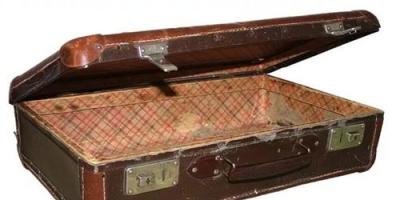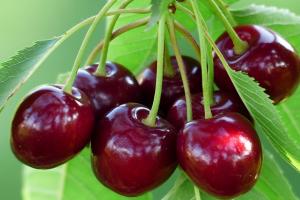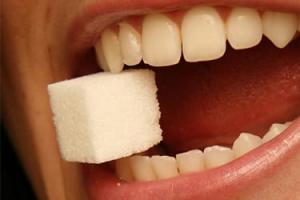Many owners country houses and dachas strive to achieve perfection in everything. After all, even the most beautiful house with balconies or a gazebo will look dull and out of place against the backdrop of an unkempt yard. You can achieve comfort in various ways.
Flower beds along the fence, photos of which can be found in gardening and landscape design magazines, will be an excellent decoration for any site. Moreover, you do not have to resort to the help of experienced specialists and pay exorbitant amounts of money for their services. This article will teach you how to properly design flower beds along a fence with your own hands, select interesting combinations of plants and care for them.
Decorating the area near the fence
Note! If you want to create a mixborder - a flowerbed consisting of various plants, which together ensure continuous flowering, you will have to make a lot of effort. Mixborder requires:
- cultivation;
- trimmings;
- timely transplantation;
- glaze;
- application of fertilizers;
- the use of special preventive agents aimed at combating plant diseases.
Therefore, if you are not ready for such responsibility, you can use schemes that are simple and accessible for arranging your flower bed along the fence.

Features of arrangement of mixborders
Most often, a flower bed is created along the fence from perennials, but they can also be supplemented by annual plants, as well as ornamental shrubs small size and small coniferous trees. The most daring schemes may include potted flowers and cereal plants. Despite all the difficulties of caring for them, such compositions look very impressive.
Note! When selecting compositions, do not forget to include plants that can set the shape and height. Their professionals are called skeletons.
Most often, the landing zone is conditionally divided into three parts of unequal sizes. Plants with voluminous shapes and intricate leaves are planted at the back. Then you can place tall flowers that have a straight stem, plants of medium height, devoid of lush foliage. You can finish with low ground cover and annuals.

Combination of perennials
Symbols on the diagram:
- No. 1 – Endress geranium;
- No. 2 – soft cuff;
- No. 3 – majestic geranium;
- No. 4 – whorled coreopsis;
- No. 5 – shrubby cinquefoil;
- No. 6 – ptarmika yarrow;
- No. 7 – decorative bow;
- No. 8 – fennel multigrass;
- No. 9 - Bonar verbena;
- No. 10 – boxwood;
- No. 11 – decorative wormwood;
- No. 12 – lofant;
- No. 13 – Echinacea purpurea;
- No. 14 – khatma;
- No. 15 – clemantis.

View from above
If you are specifically interested in a flower bed along a fence, then an English mixborder is perfect for such placement. This flower garden is based on a combination of wild and garden plants. perennial plants. Planting near the fence can be emphasized with flower beds near the walls of the house and on the lawn along the paths. The shape of the composition can be geometric or free.
Composition “Four Seasons”
The composition “Four Seasons” is a flower garden that has continuous flowering. If you can correctly combine all its components, your site will have blooming flower bed, starting in spring and ending in late autumn.
Note! Add tall grasses, conifers, periwinkle to the “Four Seasons” and then your flowerbed will retain its attractiveness even in winter time of the year.

"Four Seasons"
When selecting components for your planting, consider the size of the future flower bed. Perennials and flowers must be in complete harmony, otherwise an oversaturation of one or the other can lead to dissonance and disorder.
Low-growing perennials look more attractive when planted in large groups. Those low-growing plants that bloom at the beginning of the year (these include muscari, snowdrops, hyacinths, etc.) should be placed in front.
Pyrethrums, foxgloves, and tulips will look great in the middle. Back it is better to plant sedums, sedums and chrysanthemums mixed with gray fescue and mantle.
Of course, it is unlikely that you will be able to create a perfectly balanced composition in one season, so you can use ready-made composition schemes.
Ready-made schemes for flower beds
To design the corner part of the fence, the “Piece of Cake” pattern, which has a diameter of about 2 m, is suitable.

"A piece of cake"
Symbols on the diagram:
- No. 1 – dark red daylily;
- No. 2 – silver wormwood;
- No. 3 – Macedonian bark;
- No. 4 – heuchera;
- No. 5 – clean.
The diagram clearly shows the number of plants being planted.
For those who cannot stand waiting for a long time, we can recommend a fast-growing composition.

"Fast-growing composition"
The diagram indicates:
- No. 1 – rose stock (yellow, red, white);
- No. 2 – decorative sunflower;
- No. 3 – Icelandic poppy;
- No. 4 – St. John’s wort;
- No. 5 – cardinal lobelia;
- No. 6 – catnip;
- No. 7 – Poskharsky’s bell;
- No. 8 – blue catananche;
- No. 9 – gravilate;
- No. 10 – sedum;
- No. 11 - heuchera.

Flowers on the diagram
To obtain a more expressive and spectacular flower garden, you can use the technique of combined planting of perennials with annual plants. You can use the patterns you already know with perennials, adding annual flowers to them.
Thanks to this technique, you can cover unattractive places that open up after perennial plants stop flowering.
It is better to start designing such a composition with a sketch on paper with colored pencils. This will allow you to see more clearly color combination, which you intend to do on your site.

Mixed flower bed
In the diagram above you can see the predominance of purple, pink, red and orange hues that frame the natural greenery of the leaves. Good option for any yard. Tree heliotrope (No. 1) combines well with Sander tobacco (No. 2), New Guinea balsam (No. 4) and marigold (3).
Some things to know important subtleties about the placement of various types. Let's start with the trees.
Trees
Before selecting trees for landscaping the space near the fence, you must first learn some of the subtleties of planting:
- To prevent the fence from being damaged by roots, it is important to consider the distance between him and the tree. Optimal distance – about 3 or 5 meters. Consider not only the tree's current size, but also its expected future size of the crown and root system.
- Calculate in advance area of shaded area near the fence and trees. Consider what plants can be planted nearby.
Attention! Rule 1 must be observed. Otherwise, the tree may damage the fence with its root system over time.
As a rule, our compatriots traditionally plant fruit trees, such as apple trees, near fences. But special varieties of trees have long existed to decorate this area. Here they are:
Due to trees, it is quite possible to increase the height of the fence. This is easy to do - plant trees in a row. As soon as the crowns touch, they begin to be cut regularly. Best suited to the procedure linden and elm. The first one will also delight you with an unforgettable aroma during the flowering period.
It is important to consider the purpose of the tree near the fence. For example, you can completely close your area from prying eyes. Or you might just want to give the fence a more decorative look. We will talk about which trees can be planted for different purposes a little later. What shrubs are suitable for planting?
Shrubs for places near the fence
Shrubs planted here have many advantages:
- Transformation of a not very aesthetic fence.
- Enrichment of air with oxygen.
- Purifying the air from dirt and dust if the site is located along roads.
- Easy to care for.
Deren . The shrub is absolutely unpretentious and is a favorite of many gardeners. Its variegated leaves transform any area and fence. Derain grows well in any territory, including Siberia. In summer it is decorated with flowers, and in autumn - white fruits. Perfectly amenable to shaping by cutting.

What tall flowers can be planted along the hedge?
We have already talked about bushes and trees. What flowers are planted along the fence?
One of the most popular options is rudbeckia (known as golden ball). The name is not accidental, because the inflorescences of this plant look like a ball. Bright yellow flowers will decorate any fence.
Mallow is perennial. An easy-to-care plant that can decorate any place. Easy to propagate and does not require special care. Blooms almost until October in warm weather.
Sunflower. This flower capable of growing in height up to one and a half meters! His sunny view can hide any, even the most inconspicuous fence. Sunflower is also useful - the seeds and other parts of the plant are widely used in herbal medicine. Loves good watering.
Decorative bows can look great -.

Mixborders along the fence: construction principle, photos, ready-made diagrams
Widely used in Lately for landscaping the entire area, and not just places along the fences. Mixborder is several different plants that bloom at the same time and create a stunning riot of colors.
Here are a few patterns that allow you to create very beautiful combinations plants:



Do not forget that plants that will grow quickly should not be planted in the composition. They "kill" their neighbors. All flowers and shrubs must have similar needs for soil, water and fertilizers.
A selection of compositions along the fence in the photo:







Before you start planting plants along the fence, you need to carefully assess the ecology summer cottage. Pick up necessary plants should be based on the condition of the soil, the degree of illumination of the site and the climatic characteristics of the region.
Shrubs and subshrubs near the fence at the dacha
The most popular among shrubs that are used as a hedge or to cover a fence is turf. It attracts gardeners with its high growth rate and interesting silvery leaves with white edges.
If you plant only 2-3 bushes of deer along the fence, then by autumn the young bush reaches a meter in height and is fully formed. In winter, the shrub will also delight the eyes of the owners of the site with its brown-red color of the wicker stem, which stands out against the background of snow.
If it is necessary to form a dense hedge along the fence, then it is best to plant viburnum (spirea) on the site. It has bright dark crimson and yellow leaves. Spiraea also looks great with golden edging on its leaves. The plant blooms in June-July for three weeks. Spiraea grows at a speed of 40 cm per growing season and forms a dense hedge, completely covered with foliage. Due to its rapid growth, spirea is subject to pruning, so the plant can be formed into bushes of various sizes and shapes. Excellent results can be achieved if you alternate spirea different colors. But in order to achieve the desired result, the vesicle must grow in a well-lit area, otherwise the leaves of all types will have the same green color.
In your design, you can also combine the useful with the beautiful by planting chokeberry (chokeberry) along the fence. In spring, this shrub blooms with beautiful inflorescences. soft pink color, and at the end of summer it will delight you with an abundance of black berries with a sweet-tart taste. Autumn foliage chokeberry takes on a beautiful red tint. However, those who decide to plant chokeberry on their plot should be prepared for frequent fight against shoots.
You can also plant near the fence berry bushes: raspberries, game, currants, etc., or beautifully flowering ornamental shrubs: rosehip, lilac.
Trees near the fence at the dacha
There is a large number ornamental plants, which are great for planting along the fence. These may be maple species that have an unusual feathery color (riverine, Tatarian); willows (ash, twisted, purple, Russian, Caspian, basket, ash); buckthorn; chestnut; Linden; dwarf birch; different kinds coniferous trees.

Creepers for decorating a country fence
A solution to the problem of decorating a fence with plants can be a vine or grapes. Since these plants:
Unpretentious to growing conditions;
Does not require a special place;
Do not take up much space;
Many varieties of vines will delight you with beautiful flowers.
Planting grapes along the fence will not be difficult. To do this, you need to dig small holes along the fence at a distance of a meter from each other, the depth of each hole should be at least 40 cm, and plant prepared seedlings in them. Plant less often climbing plants not recommended, since plants, for the most part, will grow not in width, but in height.


Flowers by the fence at the dacha
Flowers planted along the fence will not be able to hide all the design flaws. On the contrary, they draw attention to themselves, and all shortcomings immediately become noticeable. Designers recommend decorating the fence with flowers to highlight its beauty. However, if the site is fenced with a decent fence, then along its entire length you can create interesting flower bed, which will be located in several rows. Caring for such a flower bed is quite labor-intensive. In the spring you will have to plant new flowers and remove old plants in the fall.
You can also plant bushes of perennial flowers along the fence: roses, peonies. But without proper care and a correctly designed compositional solution, they will not be able to become good decoration fence on a summer cottage.
Did you like the article? Share on social networks!A dacha is not only vegetables and fruits, fruit trees and shrubs, but also an opportunity to enjoy the colors of nature. Of course, you can’t do without such a thing as a flower garden or a flower bed along the fence near the house. After reading this article, you will get an idea of how to properly organize space without losing precious meters.

Landscape Design Rules
The main area of the dacha is occupied by healthy fruit and berry plantings, vegetables and herbs. Naturally, there is very little space left for a flower garden.
As a rule, these are spaces along fences and around country house. To fill this void, you need to know the principles of flower bed design.
Before deciding what to plant, you need to answer the following questions:
how much area is planned to be devoted to a flower garden. If the flower bed near the fence is long and large, then the choice of plants is practically unlimited. If there is very little space in the dacha, then the flowers should be miniature and not “aggressive”.
When planting, it is important to plant plants with the same requirements for watering, soil, and light. To do this, you need to find out which side the fence is on (sunny or shady), what crops the dacha owner plans to plant (whether they require care or not).

Near which fence will the flower garden be located: solid or sparse (from wooden slats, chain-link mesh, metal profile). What is the height of the fence, how hot does it get, whether it is necessary to hide the fence with plantings or leave it open.
When planting plants on the south side of the site, choose drought-resistant crops that need large quantities Sveta. The soil in this part of the dacha will need to be constantly watered, so it is not recommended to plant delicate plants here that require abundant watering: crocuses, tulips. For a flower bed along the southern part of the fence, planting thyme, iris, and mallow is perfect.
On the northern side of the site, plants that can withstand strong winds and are cold-resistant are planted. For a flower bed near a fence, hosta plantings, stone compositions with coniferous shrubs, horizontal juniper, ferns. In addition to low-growing plants, tall thujas can be planted on the side of the fence.

Rigid rectangular flower beds can be arranged in the form of small compositions of flowers of different colors, but of the same type. For example, marigolds, petunias.

Planting along a mesh fence
To decorate a chain-link fence, many use ordinary climbing plants: hops, girl's grapes, Jerusalem artichoke.

Some owners plant beans or peas.
In addition to them, a flower garden is planted, consisting of shade-tolerant plants and undemanding plants: lupine, rudbeckia (golden ball).

On our website you can find contacts of construction companies that... You can communicate directly with representatives by visiting the “Low-Rise Country” exhibition of houses.
These include irises, dahlias, asters and many other bulbous beauties.
Planting along a wooden picket fence
A rare picket fence can be decorated on the wall side with tall flowers, for example, hydrangea, mallow or sunflower, and of course vines. These are girlish grapes, clematis, actinidia. And along the perimeter there are medium-sized or low-growing shade-loving crops.
In addition to flowers, it is popular among gardeners to plant along wooden fences small shrubs, these are honeysuckle, raspberries, currants, lilacs and others.
As for flowers, marigolds, petunia, and lobelia are used as low-growing flowers along the fence. First, a raised platform is used to organize the flower bed. Landscape design of a flower garden does not exclude hand-made. This can be any available materials: tires, tree logs, beautifully dug along the perimeter of the curb.

Planting along a metal fence
The profile fence gets very hot in summer, so the plants are placed at a distance from it to avoid burns. For a flower garden along such a continuous fence, you can use plants of the same type. Hostas, decorative alliums, hydrangeas, etc.

Color combinations are used in such a way that flowering continues throughout the season. Thanks to this, flower beds along the fence will always look elegant and beautiful.
Flowers for large and wide flower beds along the fence are planted in tiered order. The closer to the fence, the higher the plant; the further away, the lower.
Stones, bricks, and bottles are used for decorative borders.
In the foreground are boxwood, low-growing thujas and junipers. Then, perennials are planted along the perimeter of the fence: primroses, heucheras, saxifrage.

On our website you can familiarize yourself with the most. In the filters you can set the desired direction, the presence of gas, water, electricity and other communications.
For narrow fences, flower beds consisting of one type of plant are used: carnations, asters, lavender, soapwort, etc.
Container flower beds
The most convenient way to decorate your area with beautiful flowers. When cold weather sets in, the plants are brought indoors, where they will delight the eye for some time.
A corner flower bed near a container-type fence is especially useful for decorating the space between the house and the fence. Tall flowers are located at higher elevations, and medium-sized ones are even lower. A small flowerbed, in addition to ordinary flowers, can consist of indoor plants.
Shrubs and trees along the fence
Very often, summer residents place trees and shrubs along the fence.


When planting tall seedlings, their growth should be taken into account, so they are planted at a distance of 3-5 meters from the house, otherwise they can damage the foundation of the building.
More often, dogwood, elderberry, hydrangea, and dogwood bushes are located next to the fence. When planting the latter, take into account that it does not get along with barberry.
It is customary to plant on the outside of the fence decorative types shrubs capable of creating a hedge.

Mixborders: photo ideas
Recently, landscape design along the fence has been organized using mixborders. These are plantings that are very diverse and bloom in different time. Thanks to these properties, mixborders look beautiful at any time of the year.
Part flower arrangements may include not only low-growing plants, but also shrubs, fruit trees, climbing vines and other inhabitants of the garden.
When organizing this type of flower bed, the owner of the dacha must choose the plants correctly.

You can get an approximate idea of which green pets go together by looking at photos of flower beds.
Mixborders differ from ordinary flower beds in the way they are planted. Plants grow as if they had grown on their own, and not artificially formed.
Types of flower beds
There are several types of mixborders depending on its design and content:
Classic flower garden along the fence ( English type). Characterized by its strict lines, tree crowns are typically shaped and trimmed to form a crown. In the vicinity of such shrubs there are cereal crops (rye, oats, etc.), aster and other ornamental flowers.

Meadow type of flower bed. It assumes a chaotic arrangement of meadow flowers, as they grow in nature: daisies, cornflowers, wild cereals and others.

Village type. Next to the lush blooming cereal crops And herbs you can find decorative flowers and even berry bushes.

Mixborder scheme
Plant tall plants up to 1.5 meters in height closest to the fence. These are rudbeckia, asteraceae, foxgloves and other perennials with large flowers and leaves.
When selecting flower arrangements, designers usually arrange two or three crops of different flowering periods together so that the fence does not look bare.
Secondly, medium-sized plants are planted. This row creates the splendor of the entire composition, so plants are chosen for it that, even after flowering, do not lose their attractiveness.

Lastly, form the border of the flower bed. Perfectly suited for this ground cover plants. For example, spirea, nasturtium, cornflowers.

Mixborder scheme example
Video description
In the video you can see various options flower beds along the fence:
Photo examples of beautiful solutions

The current option is to plant flowers and shrubs along the fence

No need to plant plants that will grow quickly

All plants must have similar watering needs

Easy to care for plants can brighten up any area

Different plants blooming at the same time create a magnificent riot of colors


For this option you need to choose low-growing plants.

It is better to choose plants that are easy to care for.

Many plants can bloom until October (in warm weather)


Many plants can hide even a nondescript fence

When choosing plants, you need to take into account the illumination of the area

All flowers should have similar soil needs

Some plants may grow too quickly
Conclusion
Flowerbeds near the fence hide the shortcomings of the dacha area, for example, an unsightly corner or a concrete fence. A skillfully selected composition of flowers will add attractiveness to the area and ennoble it.
A competent landscape design along the fence on the site will allow you to enjoy the beauty of the garden for many years.
Masters landscape design It is recommended to plan plantings along the fence at the initial stage of the construction process. In this case, by the time of settlement, the territory will acquire a lived-in appearance and fill the space with the beauty of flowering plantings. But to ennoble suburban area it's never too late. We will consider the question of which trees are preferable to plant along the fence in detail.
Planning nuances
Before starting the landscaping process, an inspection of the area to be transformed is carried out. When selecting plantings to decorate the space along the fence at the dacha, it is important to evaluate and skillfully use the positive aspects.

Planted trees should skillfully camouflage negative sides if they cannot be eliminated. To correctly determine which trees are best to choose for decorating a fence, you need to clarify a number of questions:
- Purpose of trees and shrubs. Will it be an additional decoration planted along a beautiful fence, or will the planting be carried out in order to hide the existing defects and shortcomings of the site.
- The area of land allocated for trees. Do not unnecessarily overload the area with tall and large plantings; this can visually reduce the internal space.
- Soil characteristics. Trees differ in their growing conditions, so care must be taken to create a comfortable environment for them.
- Degree of illumination. This affects the decision on which side of the fence to plant on.
Advice! Behind a high continuous fence, plant shade-tolerant trees that do not need a lot of direct sun.
- Possibility of aftercare. If you plan regular and thorough care, you can choose decorative plantings that require increased attention. If you don’t have enough free time, opt for unpretentious specimens.

There are two directions when designing a site along a fence:
- The landscape is as close as possible to natural growth, where low-growing plantings are mixed with tall plantings. This option is good for uneven terrain and can skillfully disguise the imperfections of the territory.
- Strict adherence to geometric shapes. The rows of trees are strictly calibrated, the plants are selected according to their height and form a well-groomed, complete composition.
A beautiful landscape appears in the photo with trees along the fence on the site:

Selecting plants based on the type of fence
The choice of plantings is carried out taking into account the characteristics of the fence, how high it is and what materials it is made of.

Rabitz
The mesh is considered a fragile structure, so it is not advisable to load it with heavy plants. The transparency of the fence also poses a problem. Therefore, when choosing shrubs and trees, they focus on specimens that will hide the internal territory of the site from prying eyes and will not create unnecessary load on the structure.

The formation of hedges is the optimal solution to the problem. Typically, tall shrubs that do not need regular crown pruning are used for these purposes. It is good to plant along a transparent fence:
- unpretentious lilac;
- evergreen thuja;
- useful hawthorn or barberry;
- irgu;
- chokeberry.
The gap between the bush and the fence is about 1 m, the planting depth is over half a meter.

In addition to the chain-link mesh, spectacular ones also have transparency. The plants presented in the following table will help you beautifully decorate the space along the fence:


Wooden fencing
Wooden fencing is considered universal, so there are no special restrictions when choosing plantings for planting. The area along the fence is filled with fruit trees or climbing bushes such as hops. The only problem in this case will be the issue of periodic staining.

Corrugated fence
The metal structure creates certain difficulties when landscaping the nearby area. The problem is the strong heating of the metal, the heat from which transfers to the plantings. The second important aspect is shading in certain areas. Therefore, unpretentious specimens in the form of jasmine and lilac will take root here. Raspberries and vines entwining the surface will feel good.

Characteristics of plantings taking into account the protective function
Decorative decoration of the site is not the only purpose of trees planted along the fence. They often perform a protective function, trapping dust and exhaust gases from passing vehicles. In some areas, plantings create a kind of shield from strong winds.

Comment! hedge, which has a protective function, it is better to plant it behind a fence.
If space allows, a shield of plantings along the fence is formed in several rows. Low specimens are planted closer to the road; they will retain heavy elements from exhaust gases. Large trees are placed directly along the fence, the height of which exceeds the size of the site fence. This form of landing will not only create a barrier from dust and gas, but will also significantly reduce noise effects.

Practicality combined with decorativeness is the pinnacle of achievement in the art of landscape design. To useful trees created an attractive landscape on the site, use the information in the table below:


Endurance is an important condition for choosing plants
The ability to regularly water trees and other plantings behind a fence is not always available. Therefore, it is worth paying attention to specimens that are drought-resistant. They are usually planted in areas with good lighting. This includes the northeast and south sides. Being under the scorching sun without watering long time The following types of trees and shrubs are capable of:
- willow is brittle and white;
- Tatarian and Norway maple;
- various types of juniper;
- thuja occidentalis and smooth elm;
- girl's grapes

A solid fence is one of the reasons for the formation of a permanent shadow in the area along the fence. It can be concrete, wood or metal constructions. An area that is illuminated in the first half of the day and is shaded in the afternoon is recommended to be decorated with the following trees:
- sugar maple and Norway maple;
- small-leaved linden;
- thuja occidentalis;
- spruce;
- elm or hornbeam;
- bird cherry.
In addition to trees, shade-tolerant vines and shrubs are planted along the solid fence:
- ivy and common hazel;
- elderberry;
- viburnum;
- girl's grapes;
- honeysuckle;
- white derain.
Important! Among fruit bushes special attention the male dogwood deserves. In addition to being tolerant of lack of light, it is unusually durable. The lifespan of this specimen reaches 200 years.


A little about bushes
In addition to trees, the area along the fence is decorated with shrubs. pay attention to fruit species, which after an attractive flowering period will bring a healthy harvest. Preference is given to plantings familiar to specific climatic conditions. It is not recommended to chase exotic things.

Shrubs are the most suitable option for the formation of hedges. Low-growing species are suitable for demarcating a line from a neighboring area; taller varieties are selected when planting along an external fence. These can be plantings of identical plants or a well-chosen combination different types. The following plants are popular for planting along the fence and decorating the site:
- spirea;
- hydrangea;
- lilac;
Attention! Some species cannot stand being next to each other. A striking example is the quarrelsomeness of turf and barberry.
Many fruit-bearing bushes grow quickly, so the area along the fence needs periodic maintenance. Pruning or cutting down excess specimens and removing diseased branches will preserve the attractiveness of the site.

If it is not possible to form a multi-row hedge, shrubs are planted densely in one ditch. Hybrids with colored leaves or beautifully flowering plantings will effectively decorate the space along the fence. The following table will be an excellent help when choosing plants for dense planting:


Rules for planting trees along the fence
When landscaping along the fence of a site, it is important to correctly arrange the plants so that the trees and shrubs create a harmonious composition.
Multi-row planting is carried out in a cascade: tall trees are planted directly next to the fence, then there is a strip of medium-height plantings, and low-growing plants complete the picture. This technique will allow you to admire all the diversity of vegetation on the site.

WITH reverse side the fence should be avoided landing fruit trees. If harvesting is not done in a timely manner, fallen fruit will create an untidy area near the site. appearance. Over time, tall trees can create a threat to the integrity of communications passing nearby. This aspect must be taken into account when selecting seedlings for planting along the fence.

- Maintain a minimum gap for the full development of the root system. Trees planted close to the fence can compromise the integrity of the structure. Plantings can also shade a neighboring plot and cause fair discontent among its owners. The optimal distance for planting trees near the fence is 3 m, shrubs - 1.5 m.
- Tall tree species require even more space. So that the powerful crown does not cause inconvenience to others, big trees planted in an area with a gap of 5 m between the fence.
- Air stagnation is one of the reasons for freezing of plantings in winter. This point is taken into account when choosing a place to plant ornamental plants along the fence.
- Powerful trees have an extensive root system. To prevent damage to the integrity of the foundation, they should be kept at a distance of 7 m from residential buildings.
- Care should be taken when designing an area near a water supply.
- Presence near fruit trees drain hole highly undesirable.
Trees are planted on a site when the growing season has already ended or has not yet begun. The absence of frost and persistent heat is the best time to work along the fence.

Conclusion
When decorating an area along a fence with trees, a number of factors are taken into account. What role do plantings play - practical or decorative? Pay attention to the growth characteristics, what kind of soil is suitable, whether an abundance of light is required or shade is needed. Make sure that the size of the trees does not create problems on your own and neighboring property. With proper planning, over time, the site will be spectacularly transformed and will delight you with an attractive composition.








